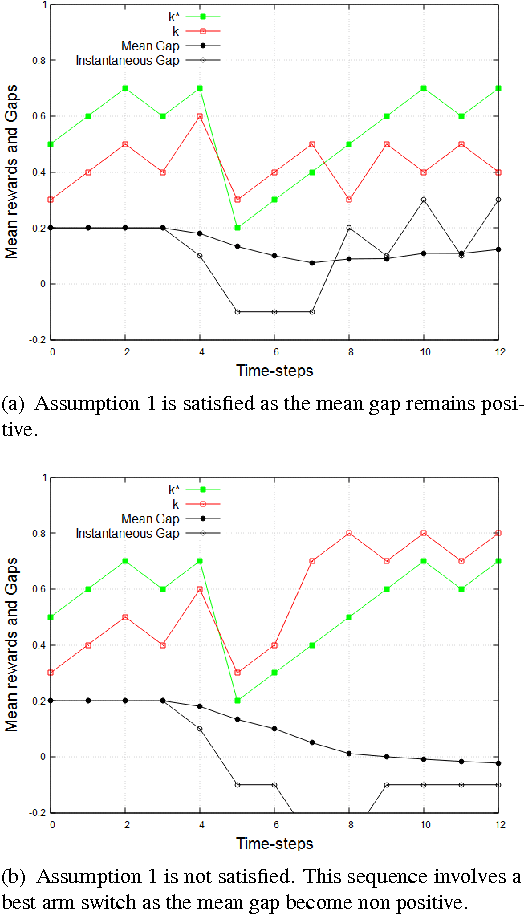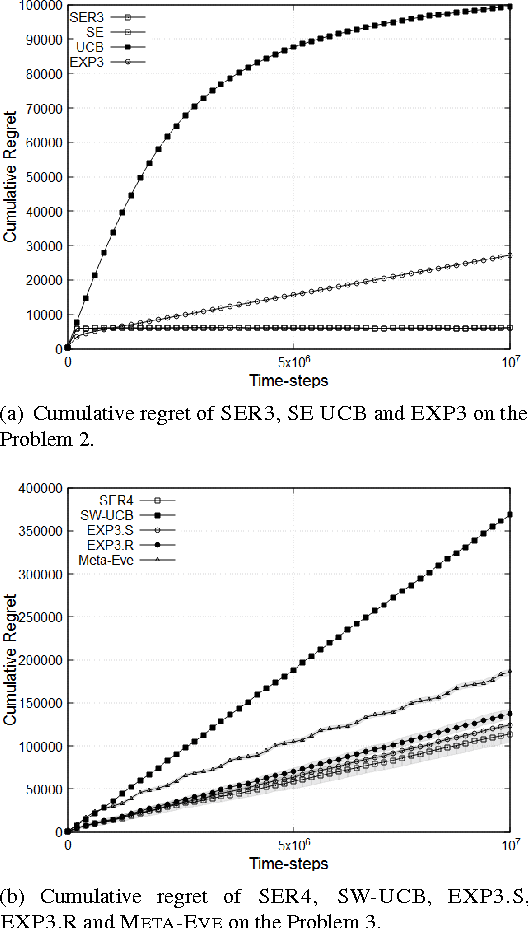Random Shuffling and Resets for the Non-stationary Stochastic Bandit Problem
Paper and Code
Sep 07, 2016



We consider a non-stationary formulation of the stochastic multi-armed bandit where the rewards are no longer assumed to be identically distributed. For the best-arm identification task, we introduce a version of Successive Elimination based on random shuffling of the $K$ arms. We prove that under a novel and mild assumption on the mean gap $\Delta$, this simple but powerful modification achieves the same guarantees in term of sample complexity and cumulative regret than its original version, but in a much wider class of problems, as it is not anymore constrained to stationary distributions. We also show that the original {\sc Successive Elimination} fails to have controlled regret in this more general scenario, thus showing the benefit of shuffling. We then remove our mild assumption and adapt the algorithm to the best-arm identification task with switching arms. We adapt the definition of the sample complexity for that case and prove that, against an optimal policy with $N-1$ switches of the optimal arm, this new algorithm achieves an expected sample complexity of $O(\Delta^{-2}\sqrt{NK\delta^{-1} \log(K \delta^{-1})})$, where $\delta$ is the probability of failure of the algorithm, and an expected cumulative regret of $O(\Delta^{-1}{\sqrt{NTK \log (TK)}})$ after $T$ time steps.
 Add to Chrome
Add to Chrome Add to Firefox
Add to Firefox Add to Edge
Add to Edge